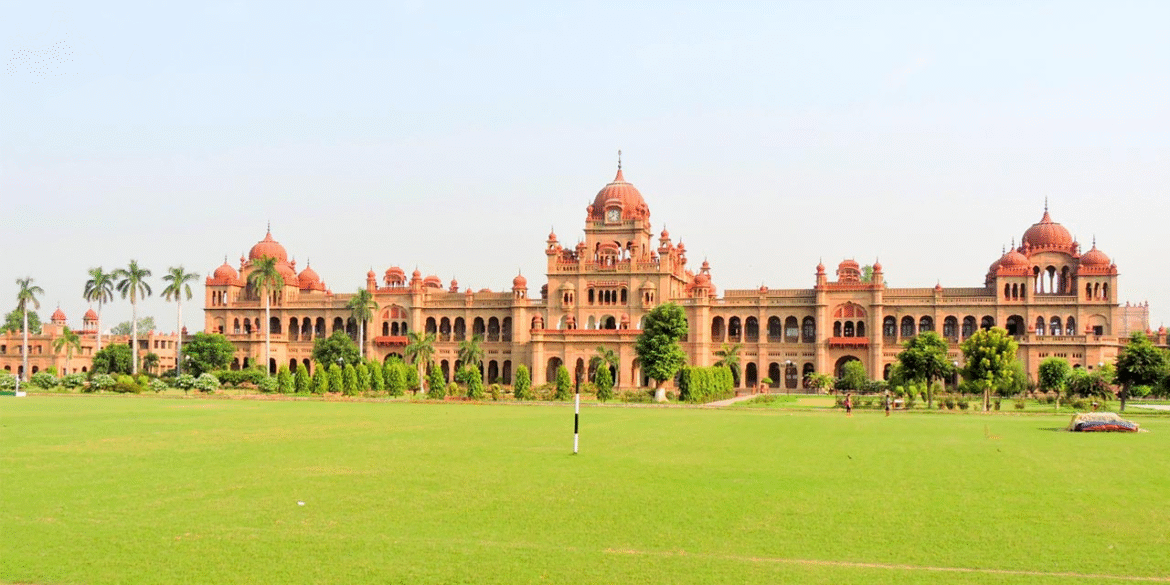AI Generated Summary
- Over the decades, the once-rural landscape of Kot Khalsa gradually morphed into a patchwork of residential neighborhoods and small-scale industrial ventures, yet it continues to bear the marks of its noble past.
- A turning point came when Sayyid Mehmood, a Muslim chieftain, took control and fortified the area with a strategically placed fort encircled by a rain-fed moat—earning the name “Kote Sayyidmood,” or the Fort of Sayyid Mehmood.
- From its days as a fortified hamlet to its place today as an educational and historical landmark, Kot Khalsa stands as a living testament to resilience, generosity, and pride.
Tucked within the vibrant sprawl of modern Amritsar lies Kot Khalsa, a place that bridges centuries of history, transformation, and pride. Once a modest village known as Rampur, Kot Khalsa today is synonymous with the majestic Khalsa College and the echoes of a regal past.
The roots of Kot Khalsa stretch back over 300 years. Originally called Rampur and home to a thriving trading community, the village weathered numerous invasions and lootings. A turning point came when Sayyid Mehmood, a Muslim chieftain, took control and fortified the area with a strategically placed fort encircled by a rain-fed moat—earning the name “Kote Sayyidmood,” or the Fort of Sayyid Mehmood.
The name would evolve once again, thanks to Sardar Bahadur Ajaib Singh Sarkaria, a prominent figure and the grandson of Kumedan Khushal Singh Sarkaria. Inspired by the establishment of Khalsa College in 1892, he rechristened the area “Kot Khalsa”—a nod to its fortified origins (“Kot”) and its growing association with Sikh educational and spiritual heritage (“Khalsa”).
The founding of Khalsa College was a milestone not just for education but for the village itself. In a remarkable act of generosity, the residents of Kot Khalsa donated approximately 365 acres of land for the creation of the college. As a gesture of gratitude, the college pledged to provide free education to the descendants of the original land donors—a tradition rooted in communal goodwill and mutual upliftment.
Over the decades, the once-rural landscape of Kot Khalsa gradually morphed into a patchwork of residential neighborhoods and small-scale industrial ventures, yet it continues to bear the marks of its noble past.
One of the most fascinating chapters in Kot Khalsa’s history is its association with Maharaja Ranjit Singh, the lion-hearted Sikh emperor. Following his conquest of Amritsar in 1802, Ranjit Singh made Kot Khalsa a strategic military site. He established a cantonment here and placed it under the command of Sardar Jai Singh Ghorewahia, a native son of the village.
The Maharaja’s hands-on approach to leadership is legendary. Historical accounts tell of him sitting atop the plinth of a well—still preserved within Gurdwara Bohri Sahib—to personally select recruits for his Khalsa Army. This intimate involvement not only ensured the quality of his forces but also forged a unique bond between ruler and soldier, earning their unwavering loyalty.
That very well, though now modernized with tiles and whitewash, remains a silent witness to these royal proceedings and continues to draw the curious and the reverent alike.
From its days as a fortified hamlet to its place today as an educational and historical landmark, Kot Khalsa stands as a living testament to resilience, generosity, and pride. It is a place where every street corner whispers tales of warriors, scholars, and visionaries—a legacy still deeply etched into the heart of Amritsar.




